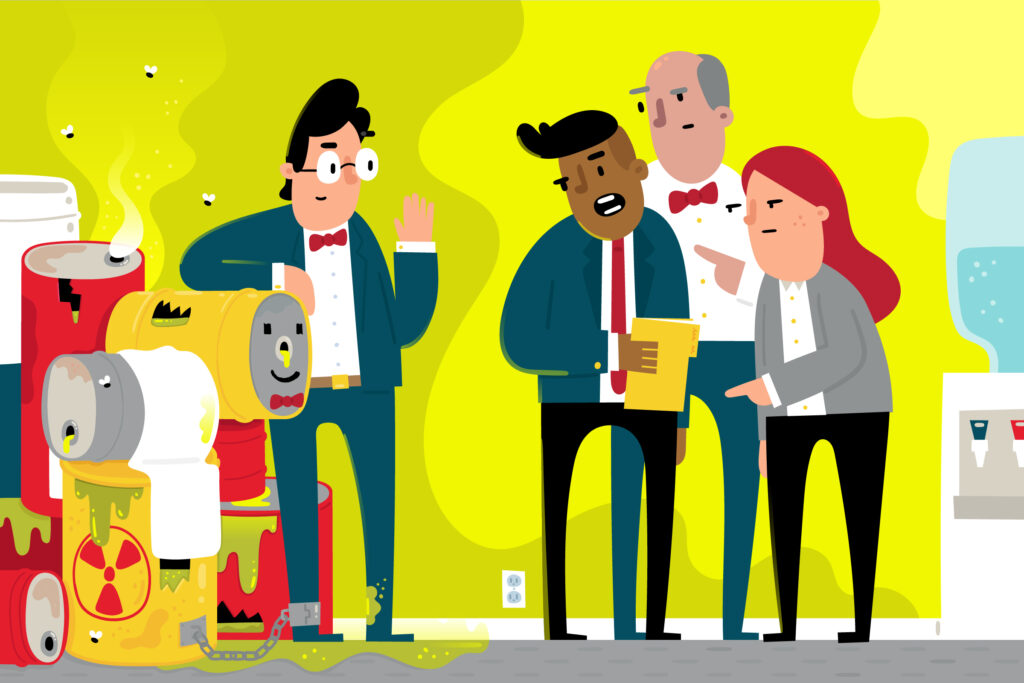When a firm commits environmental negligence or malfeasance, the company takes a reputational hit, but the firm’s CEO may face longer-term stigma than the company.
According to new research from the University of Georgia, CEOs whose firms face Environmental Protection Agency (EPA) enforcement actions suddenly become “toxic” in the elite executive labor market.
They are more likely to lose their jobs and see a significant drop in landing lucrative seats on corporate boards of directors. In the job market for top executives, a history of pollution sticks to a CEO’s name, not just the company’s ledger.
“CEOs can be dismissed for many different reasons, but environmental reasons turn out to be very sticky,” said Ugur Lel, professor and Nalley Distinguished Chair in Finance at the Terry College of Business. “They seem to carry the penalty with them, becoming much less likely to get a job as CEO at other firms and less likely to be hired to sit on another company’s board of directors. It’s kind of a special kind of scandal.”
Lel’s article, “Toxic Chief Executive Officers; Environmental, Social, and Governance Institutional Investors as Watchdogs; and the Labor Market Outcomes,” was published this summer in Management Science. In the study, he analyzed the leadership of all firms subjected to EPA fines and penalties from 2002 to 2020, focusing on leadership turnover and board memberships.
He found CEOs were 21.8% more likely to be fired by their boards in the year following a civil or criminal EPA punishment.
“I saw a drastic decrease in the probability that they would remain a CEO after an enforcement action,” Lel said. “It was more than I expected … But whatever else I tested and tried to control for, the correlation stayed high”.
He was also surprised by the durability of the reputational damage that CEOs experienced. CEOs at a company when it was sanctioned by the EPA were 3.4% less likely to be hired to sit on the board of directors of another firm in the year after the sanction. They were 8% less likely to hold a board position three years after the sanction.
“They’re not only penalized by their own firm’s directors,” Lel said. “They’re also penalized in the wider labor market by firms hiring other CEOs to sit on their boards of directors”.
Growing accountability after 2010
While EPA scandals have always damaged the reputations of corporate leaders who oversaw them, Lel saw that impact grow between 2010 and 2022. Touchstone events such as the BP oil spill in 2010 and the Volkswagen emissions scandal in 2015 centered public and investor attention on corporate environmental scandals. They highlighted the harm that poor environmental leadership can cause and the long-term financial damage to a company, Lel explained.
“What I noticed is in the second half of the sample, the impact is much bigger,” Lel said. “The penalties imposed on CEOs became a lot bigger in the second half, and bigger still in the last five years of my sample period. As the public became more aware of the problems that firms can cause, the penalties increased.”
Who is doing the punishing?
Lel found that one driver of the uptick was individual shareholders became more adamant about pushing out CEOs after EPA actions. EPA actions cost the company immediately in terms of fines, but also open the company to liabilities for clean-up costs or future fines. Shareholders worried about the company’s reputational loss and impact on the firm’s share price, he said.
“A CEO’s main job is to maximize the stock price for shareholders, but if the only goal you have is to maximize the firm value in the short term, those actions can hurt the company in the future,” Lel explained. “That’s what’s happening here. If you don’t fix environmental issues because you don’t want to make the investments, if you continue to violate EPA laws because you’re focused on short-term firm value — it’s going to come back to hurt you”.
Another factor was the proliferation of socially responsible investors (SRIs) and ESG Funds. The investors behind these funds typically invest in “dirtier” industries where EPA actions are more common. There’s more impact in cleaning up a dirty company than investing in a company that’s already clean, Lel added.
“And the penalties levied against CEOs are much bigger when you have an active investor like this,” Lel said. “These investors are actively monitoring the firm’s actions and may be penalizing the CEOs more when the CEOs fail to meet environmental standards”.
Future research
By the time the EPA acts to sanction a firm, most of the environmental damage has been done, Lel said. It’s a penalty reserved for some of the worst cases, so it doesn’t represent a lot of the negative impacts companies have on the environment.
In the future, he hopes to examine the impact of less extreme environmentally dangerous actions on CEO labor outcomes. He also hopes to assess the impact of environmentally friendly corporate actions on CEO job prospects.

